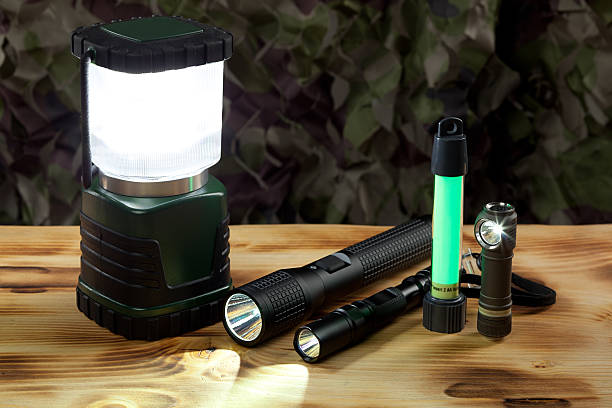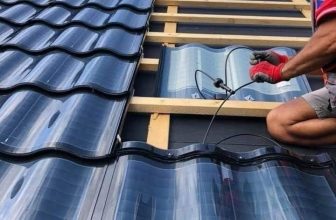
Every home should have a set of emergency lights. When you have them, you will not have to worry about running around and looking for an outlet when the power goes out. Emergency lamps are easy to use and can be quickly installed in any room of your home. They add a sense of security and reassurance, especially when you’re trying to get through the night with your loved ones. There are a lot of different types of emergency lights, so choosing which one is best for you can be challenging. This buying guide will help you with that process.
What is an emergency lamp?
An emergency lamp is a type of light that can be used when the power goes out. They are typically small, portable, and easy to use, meaning they are ideal for natural disasters. There are many different types of emergency lamps, but all have one thing in common: they emit either incandescent light or LED light. The difference between incandescent and LED lights is what type of bulb they use.
The downside to incandescent lights is that they put out heat. This means you have to be careful where you place them so your home doesn’t become too hot or unsafe. Another downside is that they don’t last very long–one hour at most–so you’ll need to replace them fairly often. This is why many people opt for the more efficient LED lights which last up to 100 hours on a single set of batteries.
The best emergency lamps come with features like an automatic timer and even a built-in radio so you can listen to your favorite music as you sleep through the night without having to worry about missing any important news alerts.
How to choose the right emergency lamp
Choosing the right emergency lamp is not easy. There are so many options and features to think about. For example, you have to consider the size of your room and how much light you need in that room. You could also consider the power of the light source and the time it takes for your batteries to charge. If you have pets, you might want to consider an emergency light with a motion sensor that will only turn on when there’s movement in your room.
1) Consider the type of light source
This is one of the most important factors in choosing an emergency lamp. There are three main types of light sources: incandescent, fluorescent, or LED lights. Incandescent lighting is long lasting but produces very little lumens (light brightness). Fluorescent lighting is inexpensive to operate but has a shorter life span; they are usually used as a secondary lighting source since they can’t produce enough light on their own. And finally, LED lights last longer than any other type of emergency lights on the market while producing more lumens per watt than incandescent or fluorescent lights do.
2) Find out how much power your battery will provide
The amount of power your battery can provide is important for choosing which type of emergency lamp works best for you and for running that lamp during an outage, so it’s necessary to know what type of lithium-ion battery is included with this product before buying it. The majority of products use A123 cells, which provides
How to install your emergency light
The first step to installing your emergency light is figuring out where it should go. It’s important that you keep in mind the areas of your home that are most likely to experience a power outage and make sure that you install the lamp accordingly. For example, if you’re planning on installing an emergency light in a living room, make sure there is plenty of clearance between it and any furniture or decorations. Once you’ve decided on where to place your lamp, all you need to do is mount it. Make sure the area is level and don’t forget to secure the cord with screws or nails before screwing in the light bulb.
Types of lights
There are many different types of emergency lamps, so you should decide what you need based on your needs. If you’re looking for a light that can last for hours, then maybe a portable lamp is the best option. But if you’re looking for a light that is always on, then maybe an indoor lamp is the best option.
If you need a light that has the ability to be used anywhere, then maybe an outdoor lantern is the best option.
Types of installation options
The first thing you need to consider is where you would like the emergency light installed. There are many different installation options available. Some types of installation include:
- Wall-mounted
- Ceiling-mounted
- Free-standing
- Under-the-counter
- Candles and lanterns
Things to consider before buying
There are a lot of things to consider before buying emergency lamps. You should first decide what type of lamp you want. This will help you narrow down your search and find the best option for your needs. Another thing to consider is how often you will use the lights and how much space the lamps take up in your home or office. You should also look at how easy it is to install the lights in specific areas, like bathrooms, hallways, kitchens, and bedrooms.
Tips for using your emergency lamp
1. Choose the right bulb
This is a question of safety above all else. You should always use LED bulbs in emergency lamps, as they are more efficient and will last longer than other types of bulbs. If you need to cut down on electricity costs, CFLs are an inexpensive option.
2. Know how long the bulb will last
You want to choose a lamp that won’t burn out too soon so you don’t have to change it often. Make sure that the bulb lasts for at least 1800 hours before it needs replacing, so you don’t waste your money or time looking for one when the power goes out unexpectedly.
3. Consider where it will be placed
Not everyone has access to outlets in every room of their home and may have trouble finding a place to put your new lighting system. If there’s nowhere appropriate, consider putting the light in any room with a window that faces outside so that you can use natural sunlight as your source of light when it’s dark outside. These tips will help you find the right type of emergency lamp for your home!
Conclusion
Although emergency lights are primarily marketed as safety products, they can also be used in a variety of other ways. They make great additions to a home or office, because they’re easy to install and they don’t take up much space.






